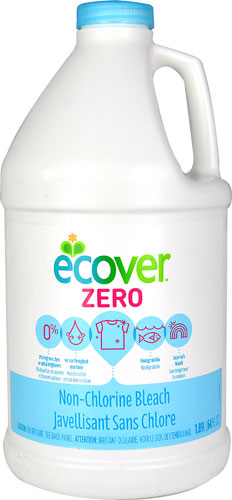If you’ve ever experienced a diet detox, or even just resolved to eat “cleaner,” you might also wonder how your home environment affects your wellness. Given that Americans typically spend more than 90 percent of their time indoors, air quality is crucial. Furniture, building materials, as well as personal care and cleaning products can off-gas a variety of toxic compounds.
In fact, research suggests that the average home contains anywhere from 500 to 1000 chemicals, most of which we can’t see, smell or taste. It’s therefore no surprise that indoor air pollution is widely considered to be one of the most serious environmental risks to human health.
Much of the food sold commercially also contains chemicals that are being linked to adverse health effects on our bodies—including our nervous, immune, reproductive, endocrine, cardiovascular and respiratory systems. The good news is that you can start creating a greener, safer home right now. These tips can help:
1. Organic & non-GMO produce
According to The National Academy of Sciences, 90 percent of the chemicals applied to conventional produce are not tested for long-term health effects. To that end, choosing a mostly organic, non-GMO menu is a great first step in creating a healthier home.
Organic fruits and vegetables (which also means non-GMO) are now more affordable and accessible than ever. For best value, opt for produce in season, which invariably costs less. You can also check out our updated “dirty dozen” and “clean fifteen” lists, which feature the most and least pesticide-contaminated foods at your market annually. Be sure to choose organic when purchasing produce that fall under the dirty dozen category and save money when purchasing conventional fruits and veggies on the clean fifteen list.
2. Safe, plant-based cleaning supplies
Commercial cleansers advertised constantly on TV can easily be swapped for natural, plant-based alternatives that are just as effective, without harming your family, the environment or your pets. Start by phasing out chlorine bleach, a harsh chemical found in numerous cleaning products.
Instead, use safe, hydrogen peroxide-based bleach for laundry, counters, etc. Hydrogen peroxide effectively zaps mold and mildew, sanitizes counters and cutting boards and removes stains. Also, avoid ammonia—found in commercial mirror and glass cleaners—which is a powerful irritant and may cause bronchitis and asthma over time.
Brands like Seventh Generation, Method, Ecover and others offer non-toxic cleaning products that run the gamut from tub to tile to counter, floors, laundry and more.
3. DIY solutions
If you prefer, you can also make your own solutions on the cheap, with household staples such as lemon, vinegar, baking soda and essential oils with disinfecting properties such as tea tree, lavender, rosemary, eucalyptus and more.
4. Eco-friendly beauty products
According to the Environmental Working Group, Americans may use up to 126 different ingredients for personal care daily, many containing chemicals such as parabens, petrochemicals, phthalates, sulfates, synthetic dyes and fragrances, triclosan and more.
By "greening” your beauty routine, you can reduce your chemical exposure—especially as we absorb up to 60 percent of what we apply to our skin. You can now find healthy, non-toxic, biodegradable alternatives in every category, including toothpaste, shampoo, deodorant, face cream, cosmetics, nail polish, sunscreen and much more.
5. Houseplants
You may be surprised to learn how effectively houseplants can improve your health and clear toxins from the air in your home. The purple waffle plant, for example, was rated one of the best detoxifiers when researchers at the University of Georgia tested 28 common indoor decorative plants for their ability to remove the top five indoor pollutants.
The beautiful areca palm is another winner, rated by NASA as being one if the best plants for clearing dangerous formaldehyde from the air. Another favorite in many homes is the attractive, low-maintenance spider plant, which helps to neutralize chemicals such as benzene, formaldehyde, carbon monoxide and xylene.
Small changes do add up. Here’s to a green and healthy home!




